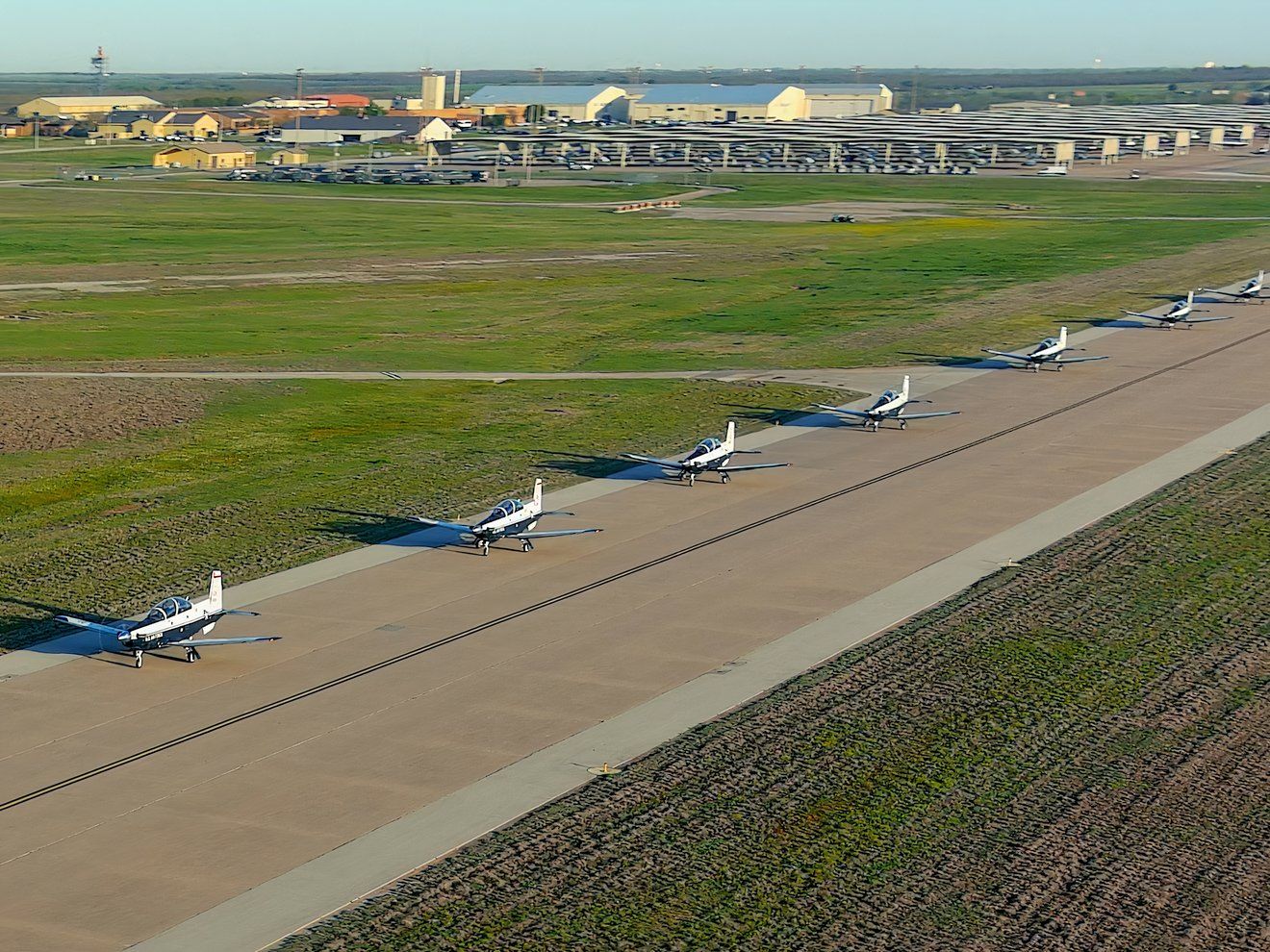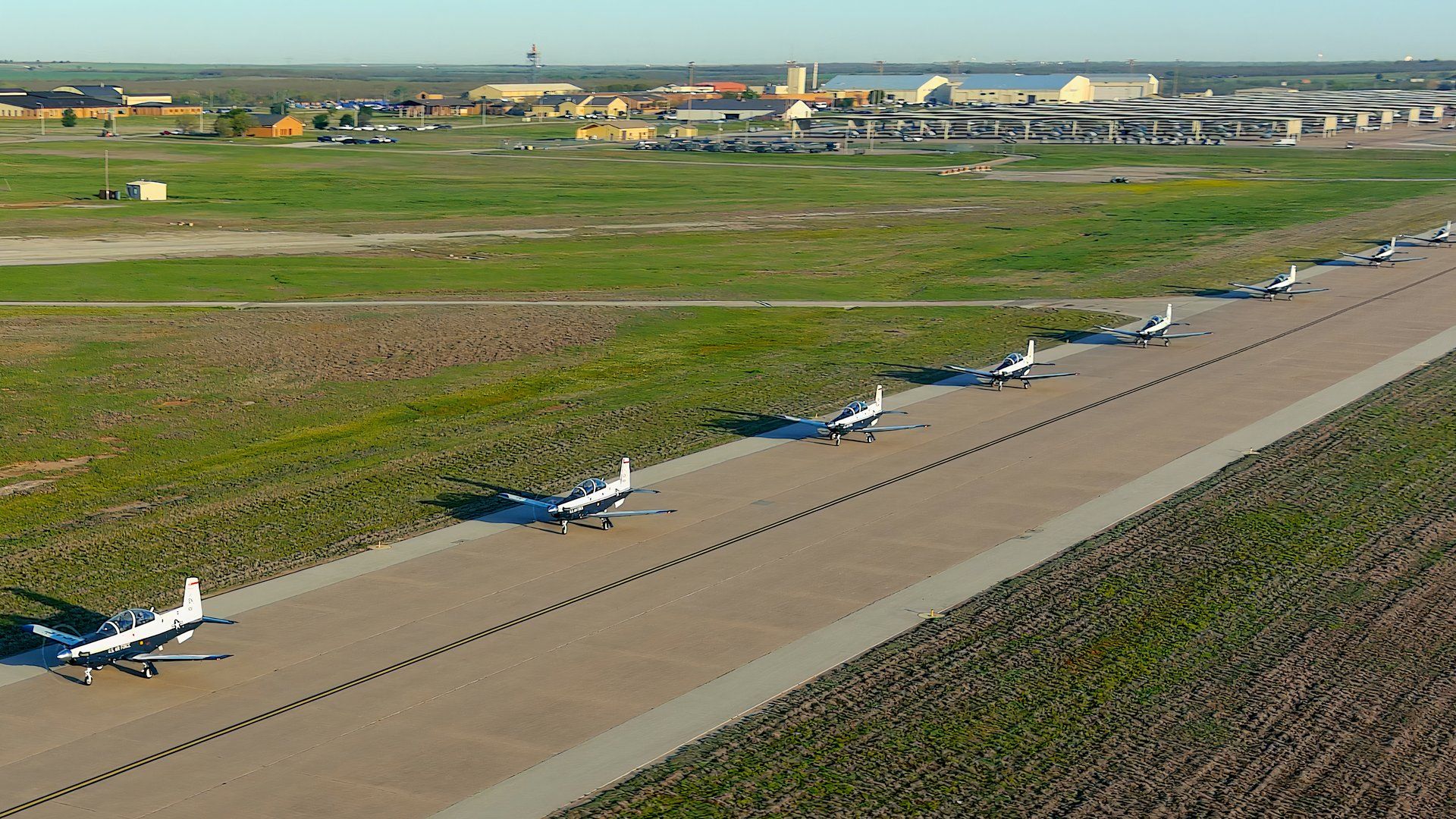
Summary
- US Air Force Capt. Robertson tragically died, likely due to a faulty Martin-Baker ejection seat on the T-6A Texan II.
- Previous issues with Martin-Baker ejection seats prompted fear of malfunctioning seats.
- Ejection seats work by being armed on the ground, assisting pilots in emergency situations.
A malfunctioning Raytheon T-6A Texan II’s Martin-Baker ejection seat claimed the life of US Air Force 80th Operations Support Squadron Capt. John Robertson May 14. The ejection seat was fired from the ground of Sheppard Air Force Base, Texas, the preceding day, and a full US Air Force investigation is underway.
About the T-6A Texan II Ejection Seat
In the case of the T-6A Texan II – which is the US Air Force’s primary flight trainer, the Martin-Baker Ejection Seat is the model US16LA. According to Martin-Baker’s product page,
“Designated the US16LA, this lightweight ejection seat is designed for training aircraft, such as the T-6 Texan II. It optimizes the pilot field of view, improves comfort and pilot efficiency, and provides increased reliability and maintainability. With the Mk16 lightweight, low-speed seat, ejection performance is optimized throughout the escape envelope, from zero height at zero velocity in a near-level attitude through to 370 knots. It is designed to accommodate a very wide size and weight range.”
Additionally, Martin-Baker has delivered over 2,000 ejection seats with at least 33 aircrew lives saved, with 14 serving in the US Air Force. This tragedy at hand is the first fatality from the US16LA. Finally, every preflight includes checks of the ejection seat that there is nothing blocking the seat and that the seat is disarmed.
Follows previous ejection seat issues
The tragedy follows previous issues with Martin-Baker ejection seats. The concern was that the ejection seats would not fire when commanded. Why? According to a September 30, 2022 Breaking Defense report by Valerie Insinna, there was a fear some Martin Baker supplied ejection seats may lack magnesium powder – a key ingredient in carrying out an ejection. Each seat had an eight-hour inspection for verification.
NBC Dallas also quoted aviation lawyer Jon Kettles who shared,
“As someone who’s flown an aircraft with an ejection seat, sure you want it to be able to work when you need it but frankly if I was flying one of these now, I would be more concerned right now about an ejection seat launching me out just on a routine flight even when I don’t want it to.”
Clearly, a voice of caution.
But how do ejection seats work?
Good question. Ejection seats are supposed to work by being armed – preferably on the ground. Then, when the pilot needs to eject, the pilot pulls very hard on a handle and braces. After the primary rocket fires, the pilot is separated from the seat, and both fall under their own parachute. One can watch a YouTube explainer below:
Thanks to the high risk of spinal injury upon use, there is little chance of ejection seats coming to commercial airliners. But as shared in the aforementioned Breaking Defense report, US Air Force Lt. Col. Jessica Wright made clear the need for military ejection seats;
“On that pilot’s worst day, I’ve got to be able to say that the team did everything they humanly could to ensure he or she had safety of flight and the ability to eject when they needed to,”
Remembering Captain John Robinson
At the epicenter of this tragedy is an aviator and gentleman in Captain John Robinson. According to a NBC DFW report below, the late Captain Robinson was a coach to aspiring aviators.
What are your impressions? Please share with utmost civility in the comments.

